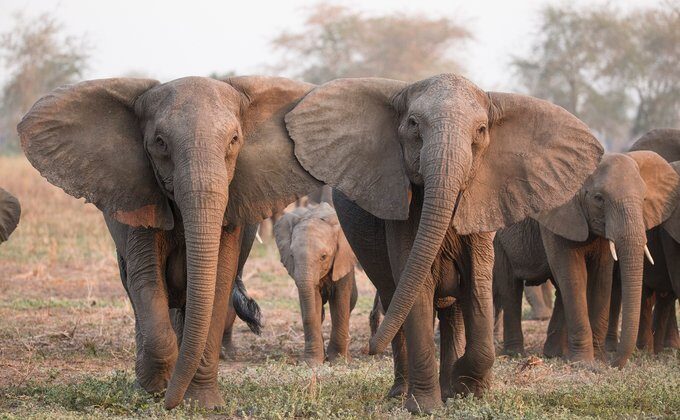
The Remarkable Adaptation of Elephants to Tusklessness
In the heart of Mozambique’s Gorongosa National Park, the legacy of a brutal civil war lingers in the form of tuskless elephants. These majestic creatures are the survivors of a devastating conflict that claimed the lives of nearly 90 percent of their kind, all slaughtered for their ivory to fund weaponry and sustenance for warring factions. The aftermath of this crisis has given rise to an unexpected phenomenon—tusklessness—a genetic trait that has surged to prominence due to its survival advantage. This article delves into the evolution of tusklessness in elephants, its impact on populations, and the intricate web of influences it casts over their behaviors and habitats.
The Battle’s Silent Mark: Tuskless Elephants of Gorongosa National Park
The scars of Mozambique’s 15-year civil war are indelibly etched onto the landscape of Gorongosa National Park, a once-thriving elephant habitat. Before the war, around 4,000 elephants roamed this vast expanse, their numbers dwindling to a mere fraction following the conflict. The aftermath revealed a remarkable adaptation among the survivors: a surge in the number of tuskless elephants. In a surprising turn of events, tusklessness, which typically affected only 2 to 4 percent of female African elephants, now emerged as a prevalent trait among the post-war generation.

PHOTOGRAPH BY ELEPHANTVOICES

PHOTOGRAPH BY JEN GUYTON
Unraveling the Genetic Advantage
The phenomenon of tusklessness among Gorongosa’s elephants was not simply coincidental. Female elephants without tusks found themselves at an advantage during the height of the poaching crisis. Younger females, born after the war’s conclusion in 1992, exhibited a significant absence of tusks. This tuskless trend also echoes across other regions with histories of extensive ivory poaching, including South Africa’s Addo Elephant National Park, where a staggering 98 percent of females were reported to be tuskless.

PHOTOGRAPH BY JEN GUYTON
Nature’s Response to Poaching Pressure
The impact of intense poaching on elephant populations is not limited to tusklessness alone. Studies conducted in areas such as southern Kenya reveal that poaching can lead to a reduction in tusk size among surviving elephants. Research comparing tusks from the pre-poaching era with those of the present day highlights substantial differences. These changes also manifest in the offspring, with younger elephants exhibiting significantly smaller tusks compared to their counterparts from less poached eras.
The Ripple Effect on Ecosystems and Behavior
While tuskless elephants demonstrate remarkable resilience in the face of adversity, their altered behaviors have potential implications for the ecosystems they inhabit. Elephants’ roles as keystone species, toppling trees and shaping habitats, can be influenced by their changing behaviors. For instance, altered movement patterns and dietary choices could lead to shifts in their distribution across landscapes, ultimately impacting entire ecosystems.
Investigating the Tuskless Phenomenon
Researchers are now embarking on in-depth studies to understand how tuskless elephants navigate their lives. By tracking their movements, analyzing DNA, and studying their diet, scientists aim to uncover the intricacies of this adaptation. The heritability of the tuskless trait remains an enigma, with scientists exploring the genetic complexities behind its inheritance.
A World Shaped by Humans
The prevalence of tusklessness underscores humanity’s enduring influence on Earth’s largest land mammals. As poaching continues to disrupt elephant populations, understanding the consequences of such dramatic changes becomes vital for conservation efforts. While recent bans on ivory trade signal positive steps, the journey to restore elephant populations and their genetic diversity is a complex one.
Conclusion: A Glimpse into an Evolving Elephant Kingdom
The evolution of tusklessness stands as a testament to the resilience of elephants in the face of human-induced challenges. From Mozambique’s Gorongosa National Park to other affected regions, the emergence of this genetic trait speaks volumes about the adaptable nature of life on Earth. As researchers strive to decode the mysteries of tusklessness and its wider implications, a new chapter unfolds in the ever-evolving narrative of these magnificent creatures and their interactions with our planet.

Leave a Reply